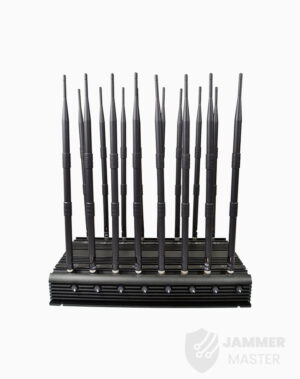
How to Block Drones with a Drone Jammer
In an age where the sky is dotted with drones, the importance of drone jammers has never been more significant. From commercial deliveries to personal

In the modern era, where communication plays a pivotal role in our daily lives, it is essential to strike a balance between the need for uninterrupted communication and the necessity to maintain the integrity of certain environments. One such scenario is the use of exam signal jammers, which aim to block specific frequency bands within a designated area, preventing mobile devices from transmitting signals. This article explores the importance of using exam signal jammers in a reasonable and compliant manner, ensuring minimal disruption to others’ communication needs.
Exam signal jammers are devices designed to disrupt base station signals within a specific frequency range and limited geographical area. These devices are primarily utilized in examination halls to prevent cheating and maintain the integrity of the testing environment. By blocking mobile communication signals within their range, exam signal jammers effectively eliminate the possibility of unauthorized communication during exams.
In order to cater to the ever-increasing demand for seamless mobile communication, the three major state-owned telecommunication operators have been tirelessly expanding their infrastructure, including the installation of base stations. These efforts aim to enhance signal coverage, ensuring that individuals can receive and transmit signals anytime and anywhere. However, in certain scenarios, such as during exams, the need to maintain a controlled environment takes precedence over unrestricted mobile signal access.

Desktop All-in-One Signal Jammer Block Full Band Cellular/WiFi/GPS/LOJACK JM014
$899.00
Handheld Multi-Purpose Signal Blocker Jam 5G/WiFi/GPS/LOJACK/RC JM016
$899.00
8 Antennas Portable Cell Phone Jammer Block Celluar/WiFi/GPS JM017
$899.00
16 Antennas Signal Jammer Block Multiple Frequencies JM002
$1,088.99While the use of exam signal jammers is crucial for maintaining the integrity of exams, it is equally important to ensure their usage is reasonable and compliant. The following considerations should be taken into account:
Exam signal jammers play a vital role in maintaining the integrity of examination environments by blocking mobile communication signals within a specific range. However, it is crucial to use these devices in a reasonable and compliant manner, ensuring minimal disruption to others’ communication needs. By adhering to legal requirements, minimizing interference, and providing alternative communication options, the usage of exam signal jammers can strike a balance between the need for uninterrupted communication and the necessity to maintain controlled environments.
Our frequency checker tool will help you check all frequency bands used in all country.

In an age where the sky is dotted with drones, the importance of drone jammers has never been more significant. From commercial deliveries to personal

Protect your vehicle’s location privacy with a professional guide on GPS jammers. From selection to legal considerations and installation tips, we’ve got you covered. Key

Here’s a step by step guide on how to build your own GPS jammer. Below are the main steps we are going to introduce in

Understanding Signal Blocker: How It Works and Its Applications Signal Blockers are devices that can disrupt mobile phone signals, preventing them from connecting to base

The Application and Benefits of High-Power Signal Jammers Enhancing Signal Blocking Efficiency in Various Environments In today’s technologically advanced world, the need for effective signal

Considerations for Purchasing Exam Room Signal Jammers Ensuring Effective Signal Jamming for Exam Integrity As the year approaches its end, many schools are preparing for

The Importance of Monitoring and Signal Interference Measures During Examinations During examination periods, it is crucial to closely monitor the examination venues and their surrounding

Selecting the Appropriate Cell Phone Jammer for Theaters and Auditoriums Overcoming Challenges in Installation and Maximizing Signal Disruption The Importance of Cell Phone Jamming in

Remote Control of Cell Phone Jammers via Smartphone: A Possibility? With the rapid development of the Internet of Things (IoT), numerous smart home devices have

Supplying high quality signal jamming devices since 2010. The only jammer store you can trust.
Jammer Master © 2024. Premium Signal Jammer Supplier Since 2010.